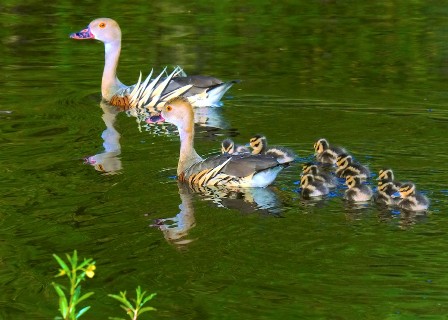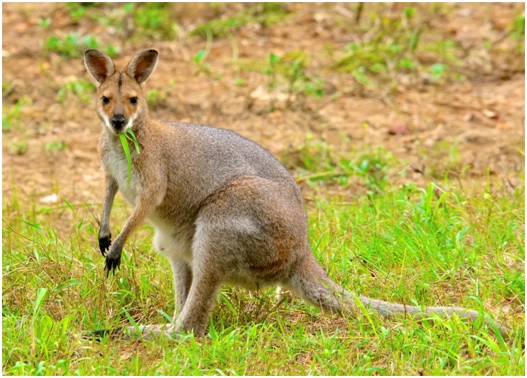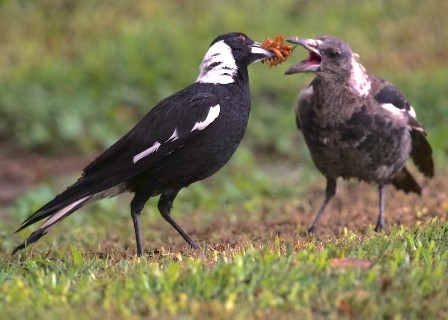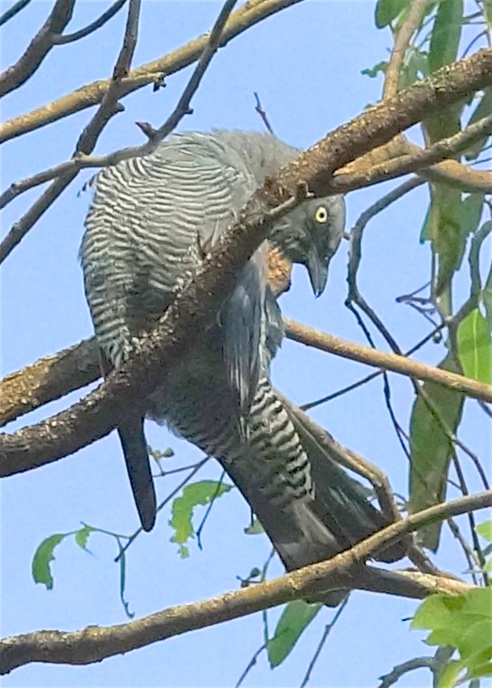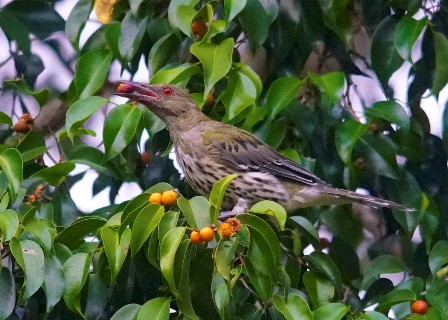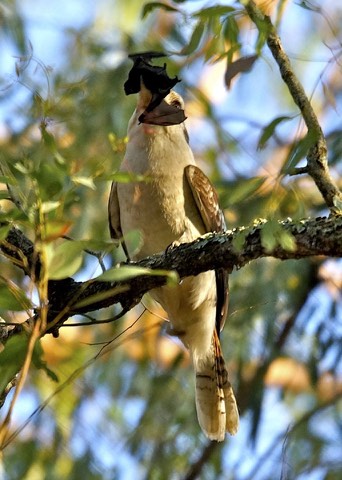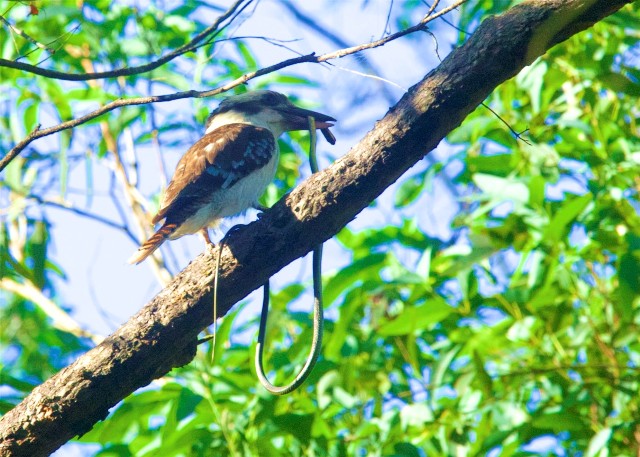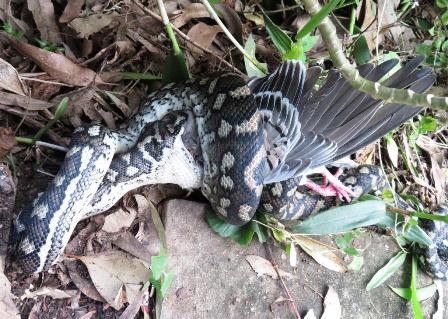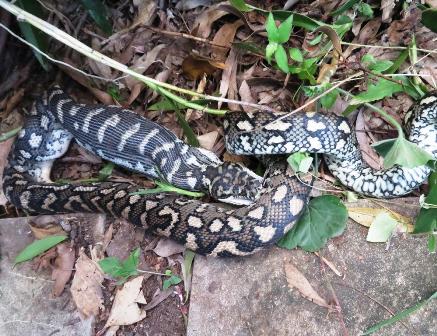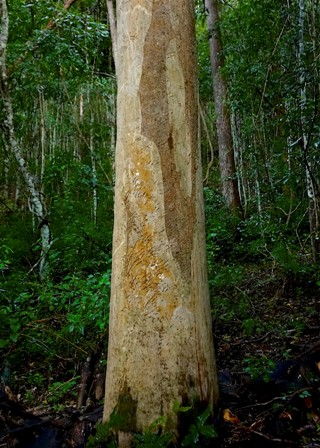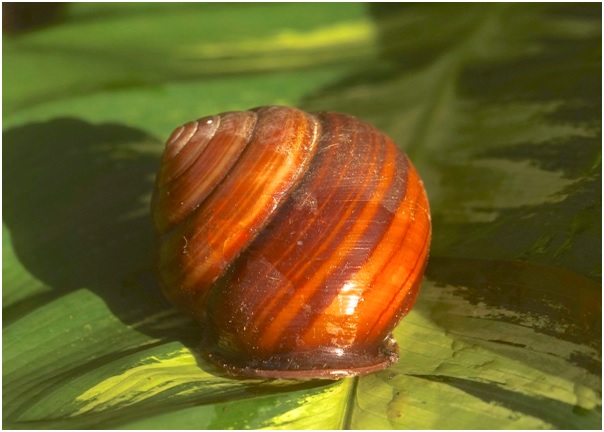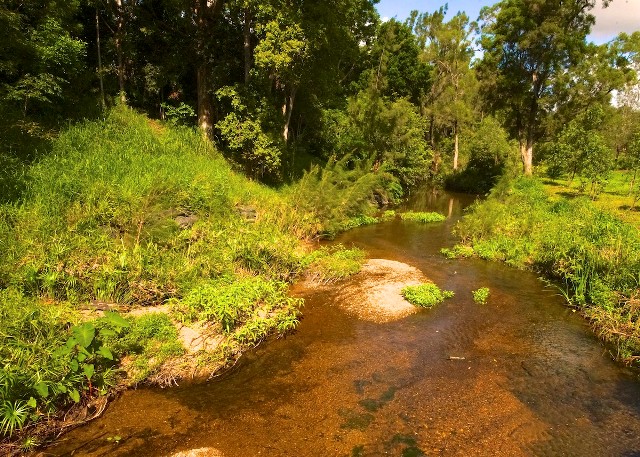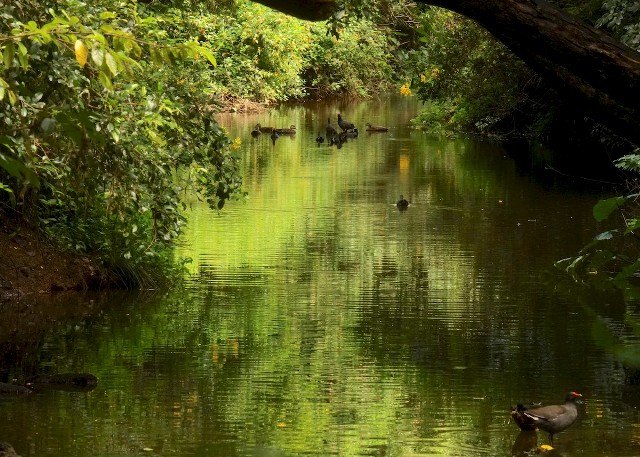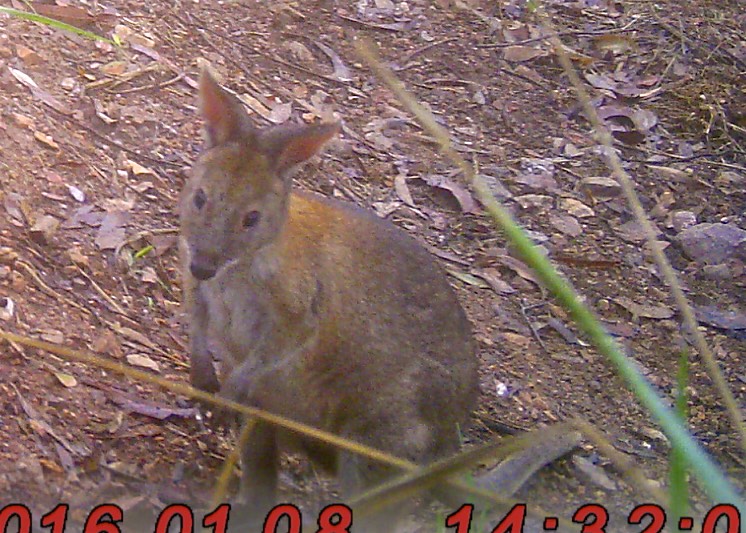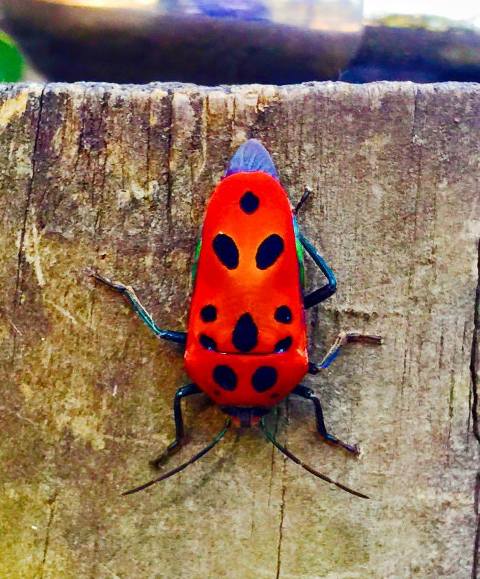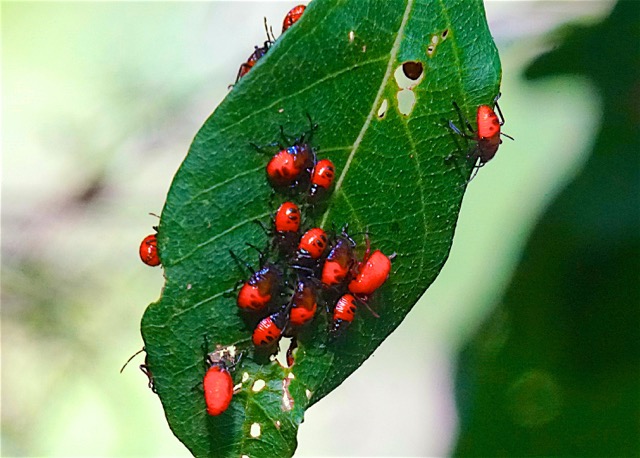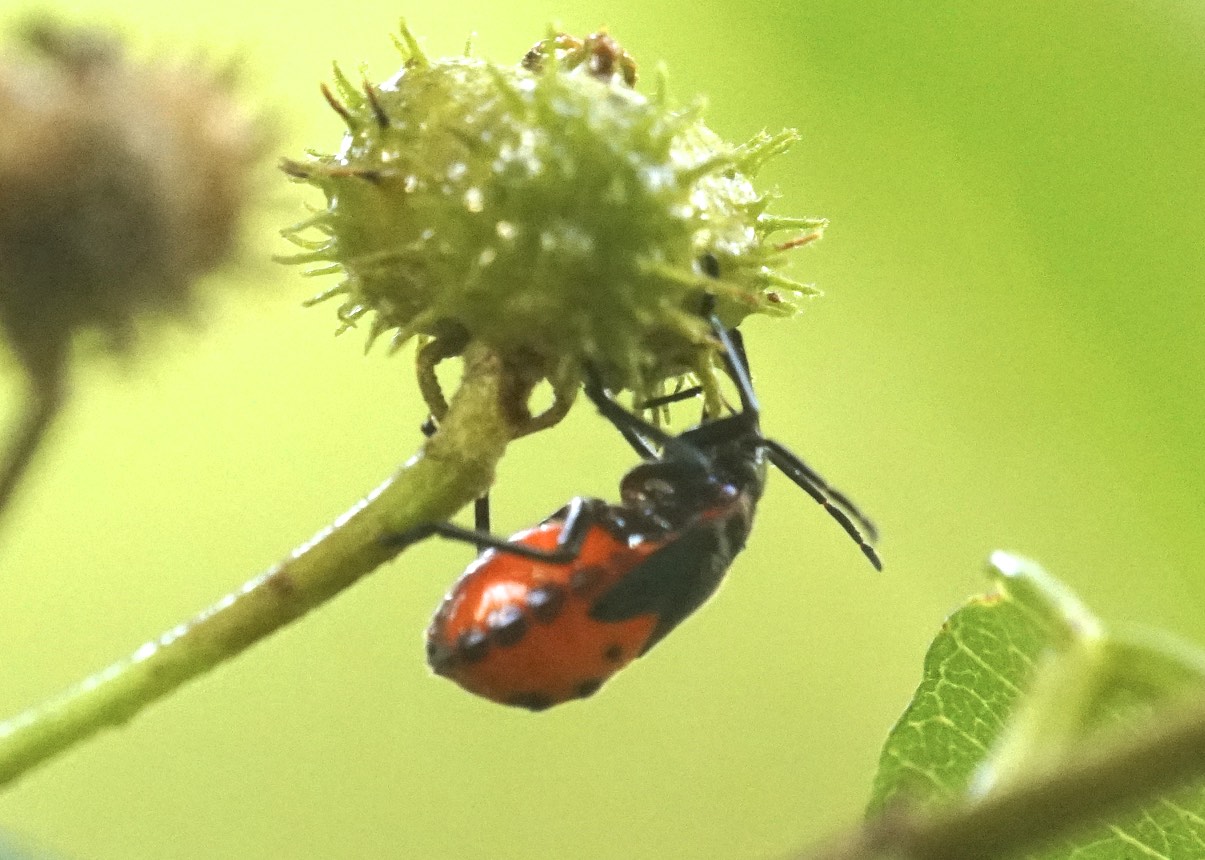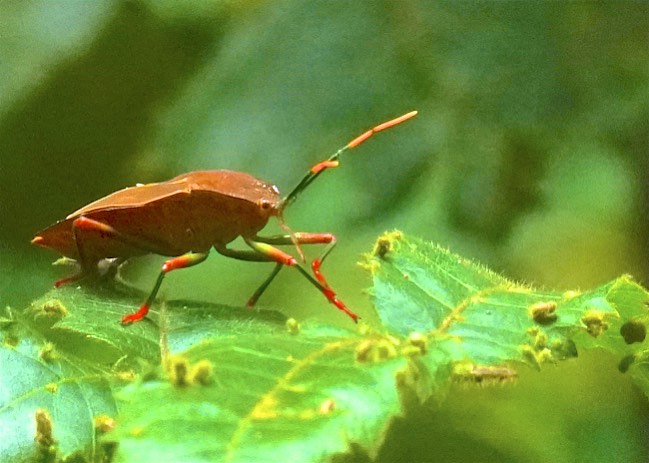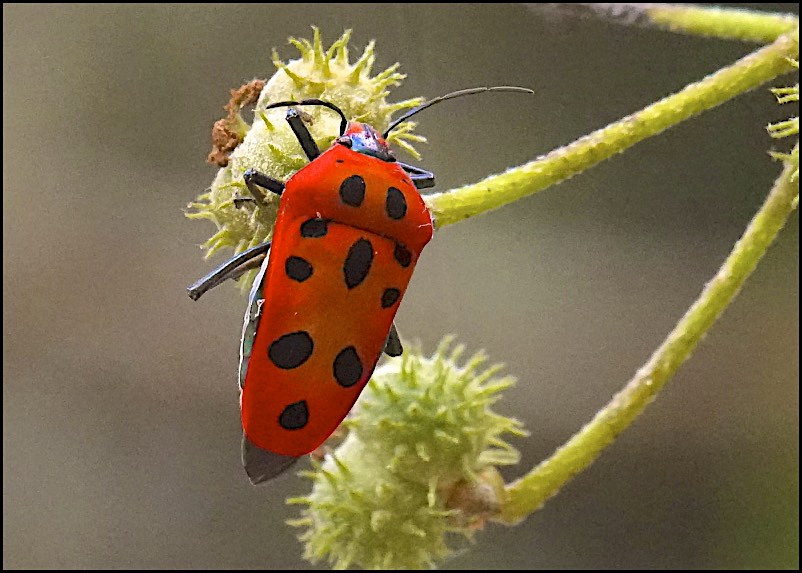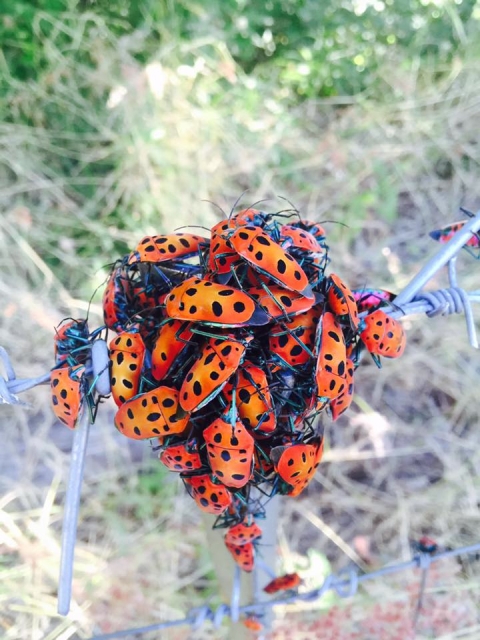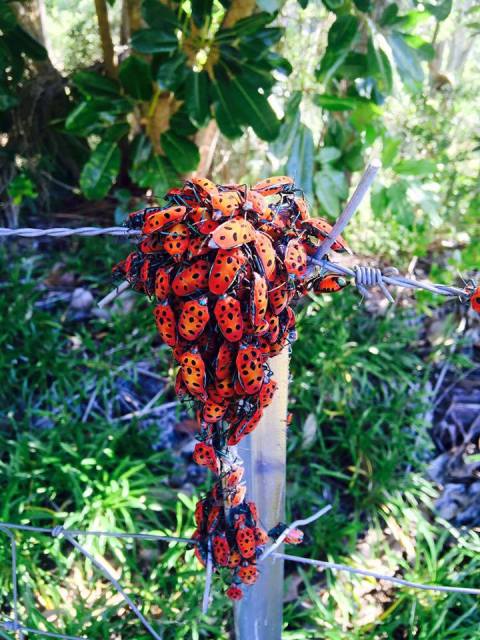When we clean up neglected areas which have been over-run with weed species and we replace them with natives, our restoration work should have the aim of restoring habitat and food supplies for the birds and other animals that presently live in the area. Ideally our work should also aim to encourage species that may have resided there before it was allowed to degenerate.
The problems we’ve reaped
No-one denies that invasive species need to be controlled.
The wholesale removal of weeds such as Lantana, however, often results in a heavy loss of wildlife. This is due to the loss of established habitat. It can be very difficult to get the resident wildlife back, even several years after the restoration work has been carried out.
Somewhat surprisingly, prolific invasive species are often the main support for wildlife in the Brisbane area. The proliferation of weeds such as Lantana is overwhelmingly due to the wholesale clearing of native species in the past. Removal of these weeds before adequate native replacements are established is common practice. It results in some species not re-establishing for many years – if ever!
The most vulnerable species are small insect eating birds, small mammals and reptiles.
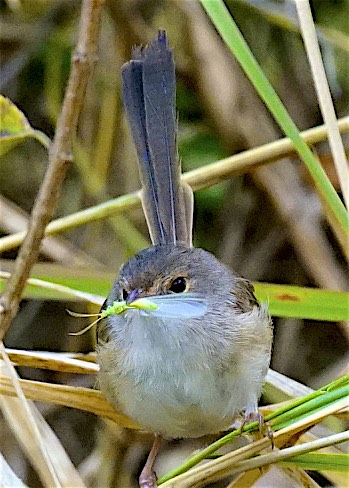
Female Red-backed Fairy-wren – a prolific insect eater. It needs dense thickets to breed as it nests close to the ground.
Weeds such as Lantana often provide excellent protective habitat for these animals as well as a huge variety of insects on which the birds feed. The removal of Lantana and similar invasive species before adequately replacing a suitable habitat can result in them simply leaving the area, often for good.
Birds such as Fairy-wrens, Willie Wagtails, Flycatchers and Monarchs will only return when there is dense shelter for them to escape to when threatened by cats and predatory birds. These small birds are very important for the natural control of pest insects that damage fruit and vegetables.
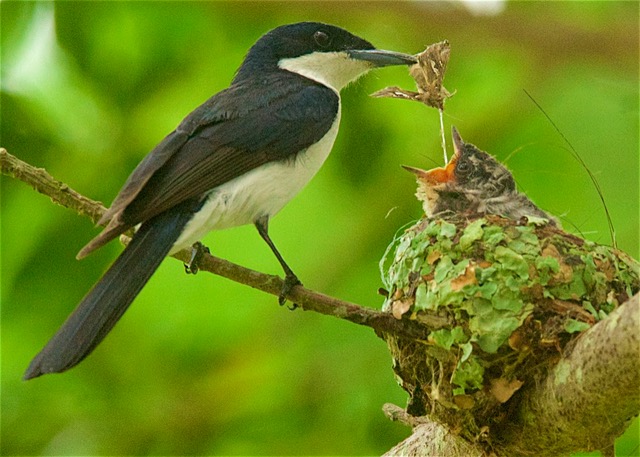 Restless Flycatcher – a specialist at catching insects on the wing
Restless Flycatcher – a specialist at catching insects on the wing
It is commonplace during restoration to see Magpies, Currawongs, Butcherbirds (Black & Whites) and Noisy Miners move into the cleared areas in such numbers that they prevent smaller insect eaters returning.
Conversely, larger fruit and nectar eating birds and medium sized mammals such as possums tend to return relatively quickly.
So what do we do?
The answer lies in simple planning
The restoration of habitat can be achieved by concentrating on establishing replacement native plant species to the stage where they are supporting the small insect eating birds, mammals and reptiles before you commence large scale removal of the existing weed habitat.
It would be prudent to make an inventory of the existing species before starting the project to see the effect the restoration is having on wildlife.
Temporary habitat can be established using pioneering species such as wild tobacco and crotalarias that can be mulched down.
Using annual grasses such as millets and canary grasses to cover areas cleared will support insects until the replacement natives establish a suitable habitat. These grasses die out naturally and stop the invasion of weeds. They also enrich the soil when they die down. Their seeding supports finches, doves and rosellas.
Concentrate on establishing small shrubs and ground covering natives in the early stages of your restoration. This is essential for retaining small animals. Covering cleared ground with bark mulch provides very little habitat and encourages the “Black & Whites”.
While many of the small birds and mammals will feed in open areas, they cannot compete with cats and “Black & White” bird species unless they can retreat to areas dense enough for them to evade capture. They also need these areas to nest safely. Thus, we need to plant a density of replacement natives with the aim of producing a thicket similar to that established by Lantana.
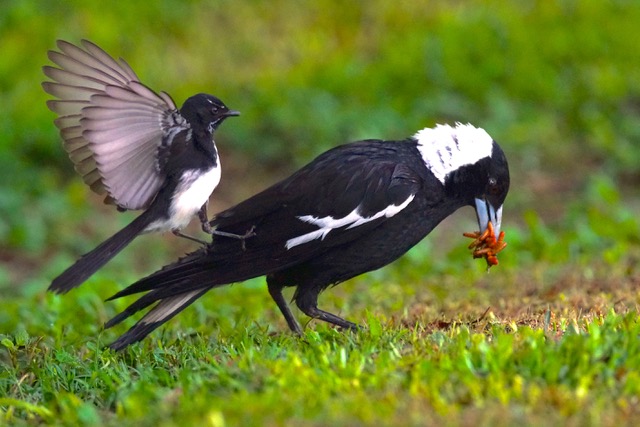 The Willie Wagtail is one of the few small insect eaters that will stand up against the Magpie and other “Black & Whites”
The Willie Wagtail is one of the few small insect eaters that will stand up against the Magpie and other “Black & Whites”
Restoration is best done slowly by planting an area adjacent to the invasive species and when that has established, removing a similar sized patch nearby and establishing natives to replace the weeds. This cycle can then be repeated, leaving enough intact habitat to support the small birds and mammals while your restoration is taking place.
The main message here is:
Don’t wholesale clear weeds such as Lantana until you’ve established a replacement, or you will lose your beneficial small insect eaters, probably for ever.
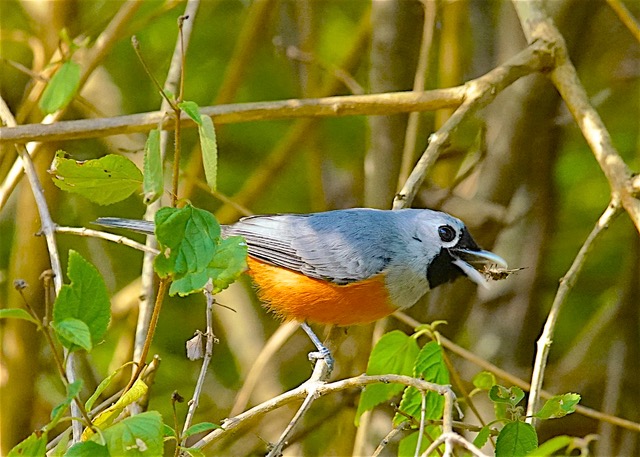 Let’s protect habitat for the Black-faced Monarch – an excellent destroyer of insects on fruit trees
Let’s protect habitat for the Black-faced Monarch – an excellent destroyer of insects on fruit trees

